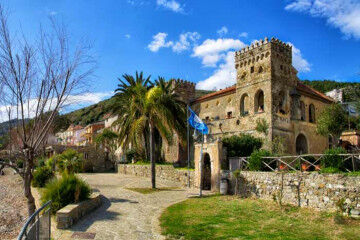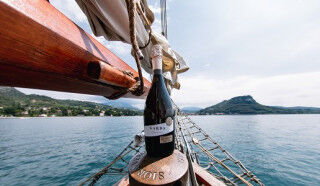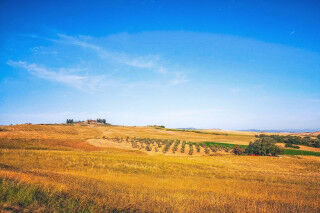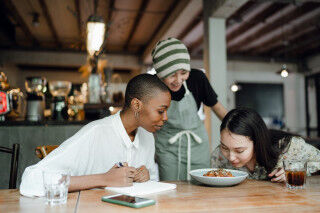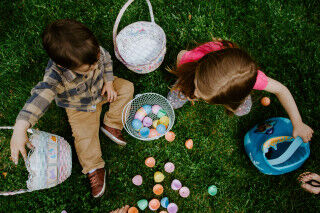A small fishing village, a few houses on the sea shore, a panorama of pure Mediterranean scrub extending behind the homes. This is Pioppi’s scenery in just a few words, the surprisingly simplistic birthplace for a movement that’s crossed the globe over, the impressive Mediterranean Diet. The term belies the Mediterranean Diet’s actual heft, moving from beyond just a diet to an actual scientific method. Pioppi is located in the Cilento National Park in the Vallo di Diano, and is the location American physiologist and biologist Ancel Keys established in the 1940s for his medical research centers focusing on the Italian and Mediterranean dietary approach.
THE MEDITERRANEAN DIET’S ORIGINS
Keys was working alongside American troops, in fact, it was during this time he invented yet another nutritional tool still used today, the K rations employed by the US military. During this time, Keys decided to make Pioppi his home, and consequently began his research on the Cilento population.
One immediate notation was how the local diet, consisting of bread, pasta, vegetables, legumes, fish, fruit, extra virgin olive oil, and overall minimal meat intake contributed to decreased cardiovascular and gastrointestinal diseases.
Based on his immediate findings, Keys initiated his observation and studies of the Cilento population and their diet, an endeavour that would last the next 40 years.
The result was the observation and annotation of a specific diet accompanied by local eating habits. This scientific method led to a comprehensive break-down of the nutritional proportions within the Mediterranean Diet.
Based on daily intakes, the composition of the Mediterranean Diet was mapped to be: 60% sugars, further broken down into 80% complex sugars (whole wheat bread, pasta, rice, corn) and 20% simple sugars; 15% protein; 30% good fats (olive oil); fruit and vegetables in varying quantities relative to the subjects’ inclinations. Fruits and vegetables were not strictly noted thanks to their useful provision of necessary, beneficial vitamins, minerals, antioxidants, and fibers.
MAPPING THE FOOD PYRAMID
The Mediterranean Diet can be visualized as a geometric pyramid. At the base of the pyramid, we put the foods that we can and should consume the most of, and at the top of the pyramid, foods that we must limit.
At the base we find water (so drink a lot), bread, pasta, potatoes, rice and cereals. Moving up the pyramid, we reach the next level, where we can find fruits, vegetables, and legumes. The next level up is home to olive oil, milk, and dairy products.
Heading up another level, we find eggs, white meat, and fish. The very top level contains those foods whose consumption we must limit: red meat, meat, and desserts.
Speaking clinically, this regimen is based on the low consumption of saturated fats, with a high intake of dietary fibers and carbohydrates. The surprisingly high consumption of monounsaturated fats comes mainly from the another fundamental Mediterranean Diet ingredient, extra-virgin olive oil.
THE STRENGTH OF MEDITERRANEAN FOODS
Let's take a closer look at a favorite ingredient in the Mediterranean diet: extra-virgin olive oil. This amazing product helps control cardiovascular dangers thanks to its polyphenols which have antioxidant properties.
Extra-virgin olive oil also functions as an effective, powerful anti-inflammatory, and helps prevents cardiovascular disease and atherosclerosis.
The Mediterranean Diet also emphasizes the intake of seasonal fruits and vegetables, which guarantees the correct daily dosages of the minerals and vitamins our bodies need, while simultaneously reducing calorie intake.
Even dried fruit has a fundamental role in the Mediterranean diet, particularly walnuts and almonds, which are both rich in polyunsaturated fats, the good fats which help protect the body’s arteries.
Cereals and grains are also key players, particularly durum wheat. This is a commonly-found ingredient in all Mediterranean cuisines across nations bordering the Mediterranean Sea. In Italy, Pasta is a popular dish responsible for providing significant amounts of carbohydrates in the guise of starch.
When incorporating whole wheat pasta, we can also bump up the fiber quantities we intake, as well as increased amounts of mineral salts, which help our gastrointestinal apparatus function smoothly.
Good news for wine lovers: red wine is also a typical beverage we find frequently in countries lining the Mediterranean basin. Red wine contains polyphenols which reduce cardiovascular risk.
NOT JUST HEALTHY, ALSO SUSTAINABLE
With much more to it than just a famous nutritional chart, last year , the Mediterranean Diet celebrated 10 years of its membership on the UNESCO UNESCO Intangible Cultural Heritage list.
The Mediterranean Diet is an bona-fide lifestyle choice encompassing not just eating habits, but local production and social customs as well. The Mediterranean Diet is additionally sustainable and eco-friendly with its low environmental impact thanks to its predominantly vegetal structure, and reliance on the seasonality of products.
According to the 2019 ISTAT- BES (Equitable and Sustainable Wellbeing) study, life expectancy in Italy is the highest within the European Union, at an all-time high of 82,3 years. A closer look reveals the male life expectancy is 80.9 years, and 85.2 years for women.
Bread, pasta, fruit, vegetables, meat, extra-virgin olive oil, and the traditional glass of wine enjoyed alongside seated meals have allowed Italians to conquer this record.
THE CILENTO METHOD FOR LONG LIFE
The Cilento peoples have long been reputed to have long lives, with assorted studies undertaken over the years exploring what makes this region so hospitable for the long-living phenomena.
A particularly well-noted study carried out by researchers from the University of California San Diego School of Medicine and the University of Rome La Sapienza, has revealed the significant presence of ultra-centenarians.
In Acciaroli alone, another fishing village kilometers away from Pioppi, the quantity of local townspeople over 100 years old rivals the numbers found on the Japanese island of Okinawa, reputed to be a world leader in the numbers of ultra-centenarian residents.
Interestingly, another finding of these studies was the confirmation that people live fulled, longer lives when their societies demonstrate respect for the wisdom of its oldest citizens.
So the takings from these studies are that good food, good wine, and slow living ultimately allows us to disconnect from our hectic lives.
HONE YOUR MEDITERRANEAN DIET KNOW-HOW IN A LOCAL MUSEUM
The Cilento Method could be the second name of the Mediterranean Diet, as Keys noted in his studies and observations.
To learn more about this lifestyle and dietary approach, the hometown of the Mediterranean Diet instead has opened a museum dedicated to this theme. Head to Pioppi’s Palazzo Vinciprova, where the name and memory of Ancel Keys rings out often. Keys and his partner (in both research and life), would prove to be a real-life embodiment of the Mediterranean Diet’s power, living to be over 100 years of age before his death in 2004.
The museums houses artifacts and bits of Keys extensive research materials. Here, we can peruse the research library, video collections with oral memories recorded by the Keys’ colleagues as well as reflections from the local Cilento centenarians of Cilento.
The museum has also dedicated functional museum space for hands-on activities, like making cavatielli (the typical pasta of the Cilento area), a counter for blind tasting of extra-virgin olive oils. Another fascinating feature: a space dedicated to Mediterranean plants and vegetables prized not only for their culinary and nutritional use, but also for their household use: colors were extracted from these local flora and used to tint paints, textiles, and more, as in the case of the Vatolla onion, the same product subsequently used in the museum space itself, resulting in a luscious, creamy shade of white.
TODAY’S CUISINE REFLECTS YESTERDAY'S KNOWLEDGE
The foods and ingredients above are all familiar scents and flavors to Delia Morinelli, the Keys' former cook. Morinelli worked alongside the Keys, and remembers fondly how the American doctor always ended his evening meal with two dried figs.
Delia still cooks at the Pioppi-based restaurant bearing her name, "A Casa di Delia.” Approximately thirty seats nestled onto a welcoming, compact terrace with charming seaside views, and covered with a characteristic awning of local strawberry grapes.
Morinelli’s menus are entirely meat-free and feature local seasonal ingredients grown entirely in the adjacent green gardens and plots. Ample selections and preparations are offered with Blue fish (pesce azzurro) as a central ingredient, for instance, the delectable alici a maruzzella (fish rolls with breadcrumbs, oil and garlic).
The American doctor’s studies must have been inspired by the oral culinary traditions of his capable female chef, who unwittingly served and continues to this day, to serve and prepare the finest diet in the world for visitors of all nations and provenances to enjoy.
Be sure to check out the articles on Extra-virgin Olive Oil for lots more about what this miracle ingredient can do for you. Talking about Diets making you hungry? Head over to the Mamablip Recipe Index for lots of amazing recipe ideas to get your inspiration flowing. And don’t forget the wine - the Mediterranean Diet loves food and wine pairings with excellent top-notch Italian wines - check out the wine selections we have here, and more food and wine pairings here!
Don't forget to register for Mamablip's weekly newsletter for updates on all the exciting newest Mamablip Blog articles, recipes and other wine news from Italy.

